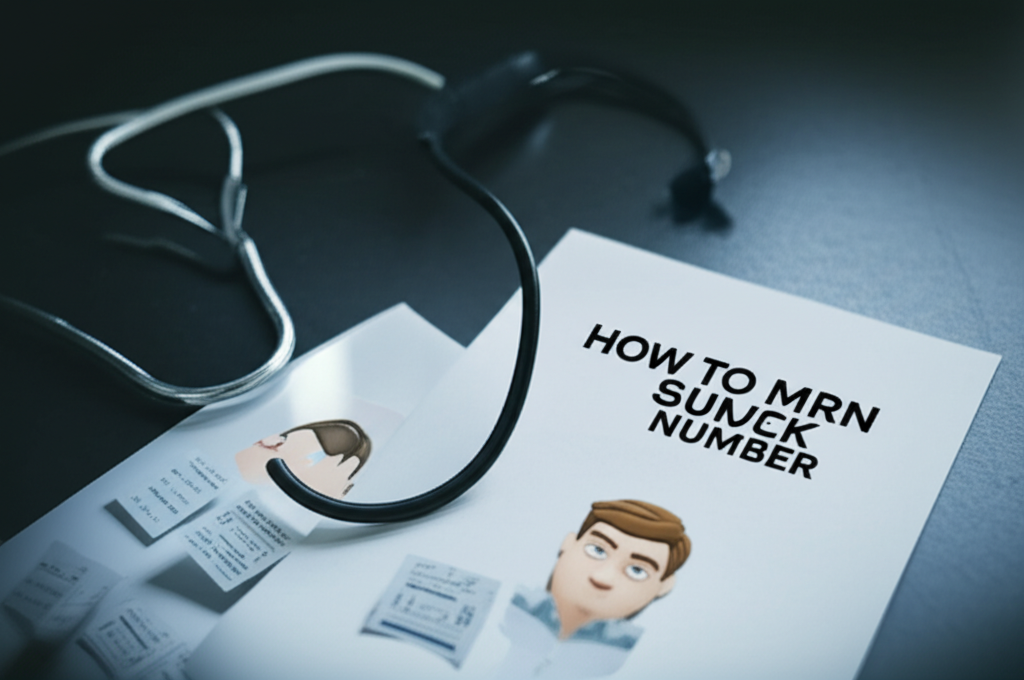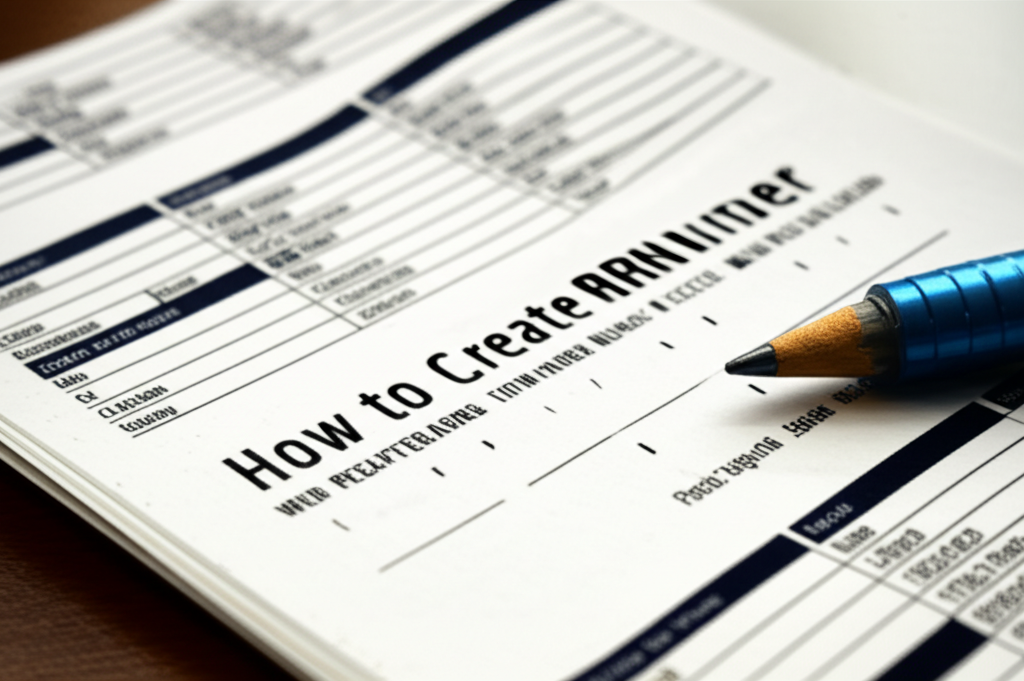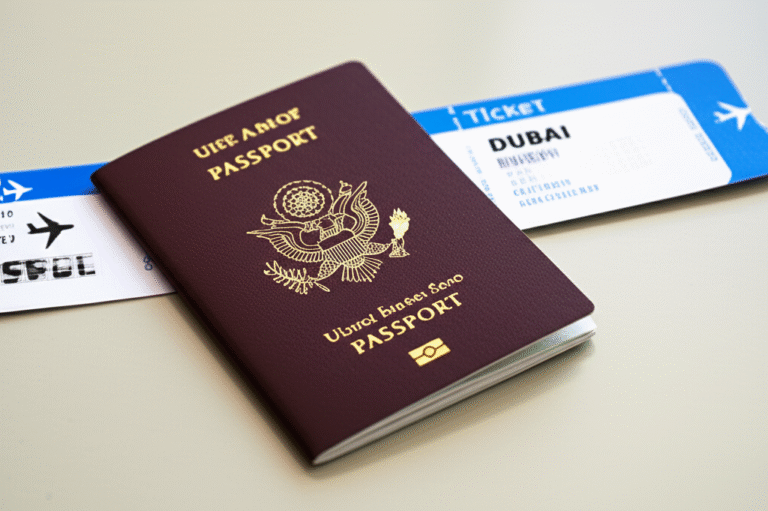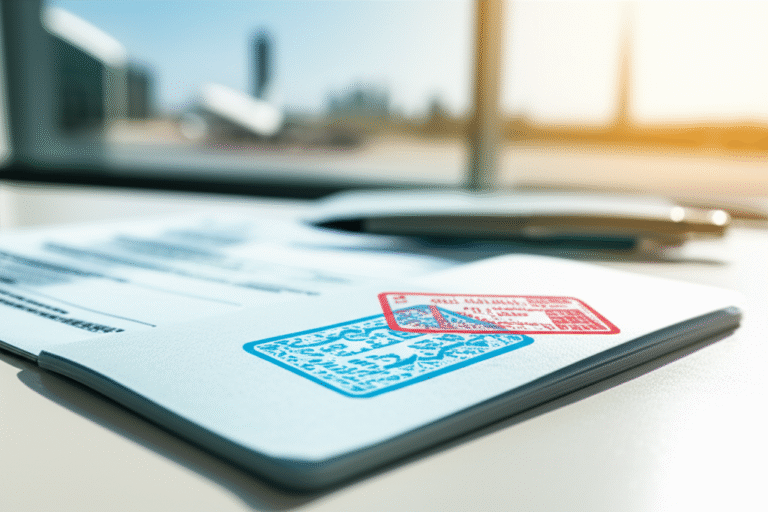How to Create MRN Number: Step-by-Step Guide

How to Create MRN Number: Step-by-Step Guide & Requirements
Creating an MRN number might seem daunting, but it’s usually a straightforward process. This guide will break down exactly how to get your MRN number, step-by-step, so you can move forward with confidence. We’ll cover what it is, why you might need it, and the simple requirements to obtain one.
Hello there! Amira here from uaestayinn. I know that sometimes, just seeing a new acronym like “MRN” can make you pause, especially when you need to create one. It sounds official, maybe a little complicated, and you might wonder if you’re doing it right. But honestly, I’ve been there, and I’m here to tell you it’s usually much simpler than it appears! Think of it like getting a library card or setting up a new online account – there’s a process, but it’s designed to be accessible. Whether you need it for healthcare, a job application, or something else entirely, understanding how to create your MRN number is a helpful skill to have. Let’s walk through it together, nice and easy.
What Exactly is an MRN Number?

Before we dive into creating one, let’s quickly understand what an MRN number is. MRN stands for Medical Record Number. In essence, it’s like a unique patient identification number assigned by a healthcare provider or facility. Think of it as your personal key that unlocks your medical history within that specific system. It helps healthcare professionals quickly and accurately access your patient file, ensuring they have the right information for your care.
It’s important to note that an MRN is typically facility-specific. This means if you visit different hospitals or clinics that use separate electronic health record (EHR) systems, you might receive a different MRN from each. This differs from something like a Social Security Number (SSN), which is a unique, government-issued identifier for individuals across various systems.
Why Do You Need an MRN Number?
The most common reason people need an MRN is for accessing healthcare services and managing their medical information. When you register at a hospital, clinic, or for a specific medical service, they’ll often assign you an MRN. This number is crucial for:
Patient Identification: Ensuring you are who you say you are in their system.
Accessing Medical Records: Allowing you and your authorized providers to view your health history, test results, and treatment plans.
Billing and Insurance: Streamlining the billing process and ensuring accurate claims.
Appointments and Follow-ups: Making it easier to schedule and manage future appointments.
While primarily associated with healthcare, similar unique identifiers can be used in other sectors for record-keeping. However, when people search for “how to create MRN number,” they are overwhelmingly referring to the Medical Record Number in a healthcare context.
How to Create MRN Number: The Process

Creating an MRN number isn’t something you typically “do” yourself in the way you might create a password for an online account. Instead, it’s usually assigned to you by a healthcare provider or facility when you become a patient. The process generally involves:
1. Scheduling an Appointment or Service: You’ll need to initiate contact with a healthcare provider. This could be booking a doctor’s visit, a hospital admission, or accessing a specific medical service.
2. Registration: During your first visit or when you’re signing up for services, you’ll go through a registration process. This is where the facility collects your personal information.
3. Information Provided: You’ll typically be asked for:
Your full name
Date of birth
Contact information (address, phone number, email)
Sometimes, government-issued identification
Insurance information
4. System Assignment: Once your information is entered into their Electronic Health Record (EHR) system, the system automatically generates a unique MRN for you within that facility’s network.
5. Receiving Your MRN: You’ll usually be given your MRN on a patient identification card, on any paperwork you receive (like discharge summaries or appointment slips), or it might be provided verbally.
Think of it this way: the healthcare system creates the MRN for you based on the information you provide. You facilitate its creation by engaging with their services.
Can I Create an MRN Number Without Visiting a Facility?
Generally, no, you cannot create an MRN number yourself without interacting with a healthcare provider or facility that uses them. MRNs are internal identifiers for their patient management systems. They aren’t public registries or something you can sign up for online independently.
However, there are a few nuances:
Online Portals: Many healthcare systems offer patient portals where you can register online and, as part of that process, your MRN might be assigned and made accessible through the portal. This is still a process initiated by the healthcare provider.
Pre-Registration: Some hospitals allow you to pre-register for upcoming procedures or admissions online or over the phone. During this pre-registration, they will assign you an MRN.
So, while you don’t manually type in numbers to create it, you initiate the process through their system.
Understanding the Requirements for an MRN

The “requirements” for getting an MRN are essentially the requirements for becoming a patient. The most crucial element is providing accurate personal information so the healthcare facility can properly identify you and create your record.
Here’s a more detailed look at what’s typically needed:
| Information Category | Details | Importance |
| :————————- | :————————————————————————————————– | :—————————————————————————————————————————————– |
| Personal Identification | Full legal name, Date of Birth, Gender | Absolutely essential for confirming your identity and distinguishing you from others with similar names. |
| Contact Information | Current address, Phone number(s), Email address | Needed for communication, sending appointment reminders, and ensuring you receive important health information. |
| Government ID (Optional) | Driver’s License, Passport, State ID (may be requested for verification purposes) | Used to match against other records or verify identity during registration, especially for new patients. |
| Insurance Information | Insurance provider name, Policy number, Group number, Subscriber information (if applicable) | Crucial for billing and determining your coverage for services. |
| Emergency Contact | Name and relationship of a person to contact in case of an emergency | Important for your safety and for informing loved ones if you are unable to communicate. |
Key Requirement: Honesty and Accuracy
The most critical “requirement” is to provide truthful and accurate information. Misinformation can lead to:
Incorrect Medical Records: You might receive someone else’s test results or have your history mixed up.
Billing Errors: Insurance claims could be rejected, leading to unexpected bills.
Delayed Care: Difficulty in confirming your identity could slow down the registration or treatment process.
What if I Don’t Have Insurance?
Not having insurance doesn’t prevent you from getting an MRN. Healthcare facilities are obligated to provide care regardless of insurance status. However, the registration process will differ:
Self-Pay: You’ll likely be registered as a “self-pay” patient.
Payment Arrangements: The facility’s billing department can help you understand payment options, financial assistance programs, or payment plans.
Charity Care: Some hospitals offer charity care or financial aid for eligible patients.
The absence of insurance simply means you’ll be responsible for the full cost of services, and the facility will need to collect that information during registration.
Step-by-Step: How to Get Your MRN Number (When You Need One)

Let’s imagine you’re going to a new doctor’s office or planning an upcoming procedure. Here’s what the experience of getting your MRN will likely look like:
Step 1: Identify the Healthcare Provider or Facility
First, determine where you need to seek care. This could be:
A new primary care physician’s office.
A specialist’s clinic.
A hospital for an inpatient stay or outpatient procedure.
A diagnostic center (e.g., for X-rays or lab work).
Step 2: Schedule Your Appointment or Service
Contact the provider or facility to schedule your visit. You can usually do this by:
Calling them directly.
Using their online appointment booking system (if available).
Through a referral from another doctor.
Step 3: Prepare Your Information
Before your appointment, gather the necessary documents and information:
Your personal identification (like a driver’s license or ID card).
Your health insurance card (if you have insurance).
A list of current medications you are taking.
Any relevant medical history you can provide (previous diagnoses, surgeries, allergies).
Emergency contact information.
Step 4: On the Day of Your Visit – The Registration Process
When you arrive for your appointment, you’ll head to the registration or admissions desk.
State Your Purpose: Let them know you are a new patient or here for a scheduled service.
Fill Out Forms: You’ll be given registration forms to complete. These will ask for all the personal, contact, and insurance details we discussed earlier.
Provide Documentation: Hand over your ID and insurance card for verification and copying.
Answer Questions: A registration staff member might ask you additional questions to confirm details or gather more specific information related to your visit.
Step 5: The MRN is Assigned
As your information is entered into their system, the Electronic Health Record (EHR) software will generate your unique Medical Record Number (MRN).
Step 6: Receive and Verify Your MRN
Patient ID Card: The facility will likely issue you a patient identification card containing your MRN. This card is important to keep safe and bring with you to future appointments at that facility.
Confirmation on Paperwork: Your MRN will also appear on any documentation you receive, such as appointment summaries, discharge instructions, or billing statements.
Double-Check: It’s a good practice to quickly review your MRN to ensure it looks correct and matches what you might have been told.
Step 7: Keep Your MRN Secure
Treat your MRN like any other important personal identifier. Keep it in a safe place. You’ll need it for all future interactions with that specific healthcare provider or system.
Example Scenario: Getting an MRN at a New Clinic
Let’s say you’re moving to a new city and need to find a new primary care doctor.
1. You find Dr. Smith’s clinic online and see they are accepting new patients.
2. You call the clinic and book your first check-up. The receptionist asks if you’ve been to their clinic before. You say no.
3. You gather your insurance card, driver’s license, and a list of your current medications.
4. On the day of your appointment, you arrive early. You go to the front desk.
5. The receptionist provides you with a new patient registration packet. You fill it out, including your name, address, date of birth, insurance details, and emergency contact. You hand over your ID and insurance card.
6. After processing your information, the receptionist hands you a small plastic card. “Here is your patient ID card,” she says. “Your MRN is on here. Please bring this with you to all future appointments.”
7. You look at the card and see a 9-digit number labeled ‘MRN’. You tuck it into your wallet.
Congratulations! You now have your MRN for Dr. Smith’s clinic.
MRN vs. Other Identifiers: What’s the Difference?
It’s easy to get confused with all the numbers and identifiers out there. Here’s a quick breakdown:
MRN (Medical Record Number): Facility-specific patient identifier. Created by healthcare providers. Used for accessing your medical records within that system.
SSN (Social Security Number): A unique, nine-digit number issued by the U.S. government to U.S. citizens, permanent residents, and temporary (working) residents. Used for taxes, employment, and many other official purposes.
Patient Account Number: Sometimes used by facilities for billing purposes. It might be the same as your MRN, or it could be a separate number related specifically to a bill or a particular encounter. Always check the label on your paperwork.
Insurance Policy Number: Identifies your health insurance plan and your coverage. Issued by your insurance company.
The key takeaway is that your MRN is tied to a specific healthcare institution. If you go to a different hospital system, you’ll likely get a new MRN.
Frequently Asked Questions About Creating MRN Numbers
Let’s tackle some common questions you might have.
Q1: Can I choose my own MRN?
A1: No, MRNs are typically assigned automatically by the healthcare facility’s system. You don’t get to pick the number.
Q2: I lost my MRN card. How do I find my MRN?
A2: If you’ve lost your MRN card, the best way to find your MRN is to contact the healthcare facility directly. You can call their registration or medical records department. They will ask you identifying questions to confirm your identity before providing it.
Q3: Can I use one MRN for all my doctors?
A3: Generally, no. Each healthcare system (like a hospital network or a large clinic group) will assign its own MRN. If you see multiple independent doctors or go to different hospitals, you will likely have multiple MRNs. However, if your doctors are all part of the same integrated health system, they may share the same MRN.
Q4: Is my MRN number confidential?
A4: Yes, your MRN is part of your protected health information (PHI) and is confidential under laws like HIPAA (Health Insurance Portability and Accountability Act) in the United States. Healthcare providers have strict rules about how they can share this information.
Q5: What if the MRN assigned to me is wrong?
A5: If you suspect there’s an error with your MRN or your medical record, it’s important to address it immediately. Speak to the registration staff or the medical records department at the facility. They can help investigate and correct any inaccuracies.
Q6: Do I need an MRN for telehealth appointments?
A6: Yes, if the telehealth service is provided by a healthcare facility that uses MRNs, you will likely need to be registered in their system and have an MRN assigned to you, especially for follow-up care or if it’s a regulated medical service.
Conclusion: Your MRN is Within Reach!
See? Creating an MRN number is really about engaging with a healthcare provider. It’s a standard part of the patient registration process, designed to ensure you receive the best and most accurate care. By understanding what it is, what information you’ll need, and the simple steps involved, you can approach any new medical registration feeling prepared and confident.
Remember, your MRN is your unique key to your medical journey within a specific system. Keep it safe, and don’t hesitate to ask the healthcare facility’s staff if you have any questions – they are there to help you navigate the process smoothly.
If you found this guide helpful, feel free to share it! We’re all about making life’s practicalities a little easier here at uaestayinn.





